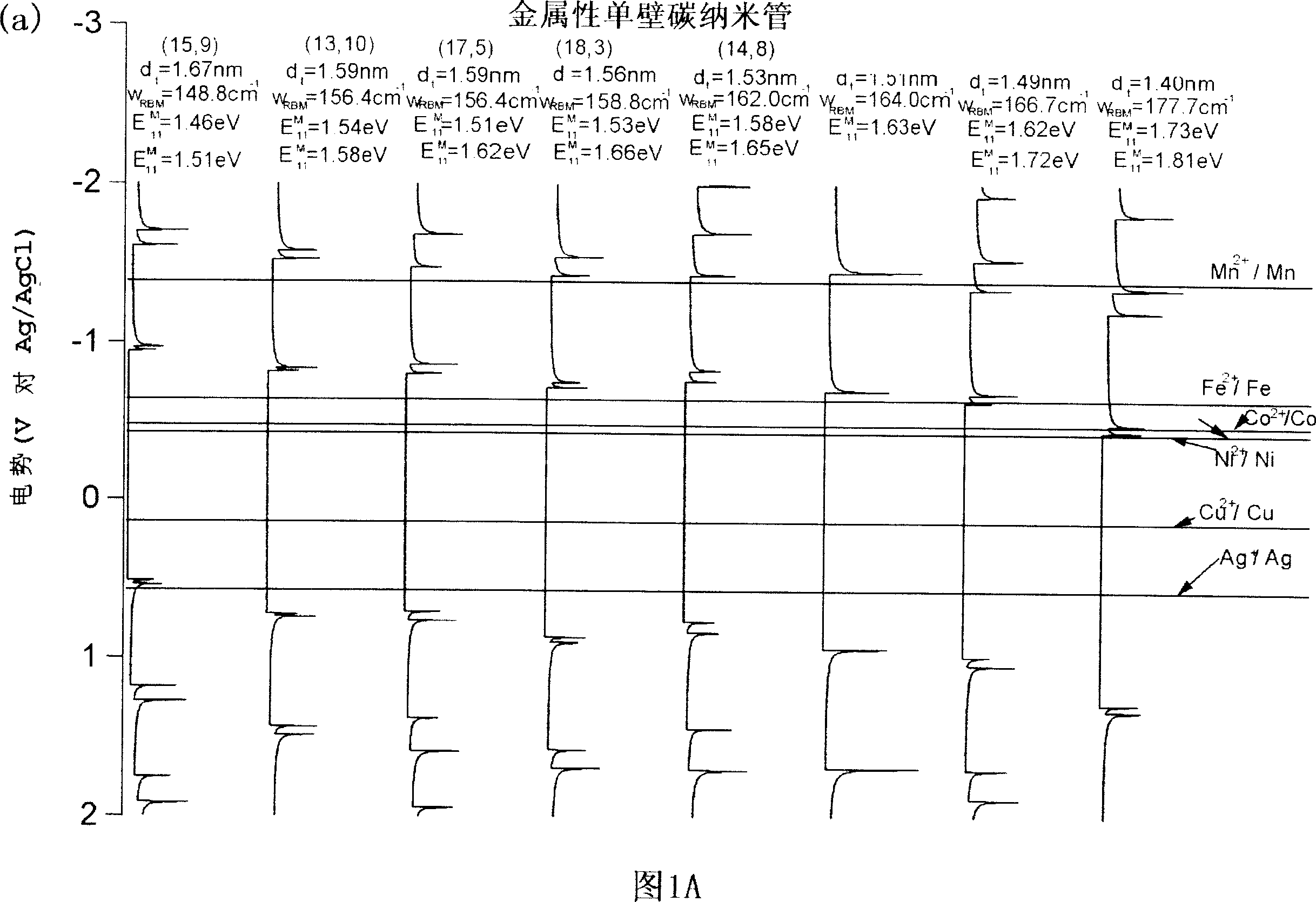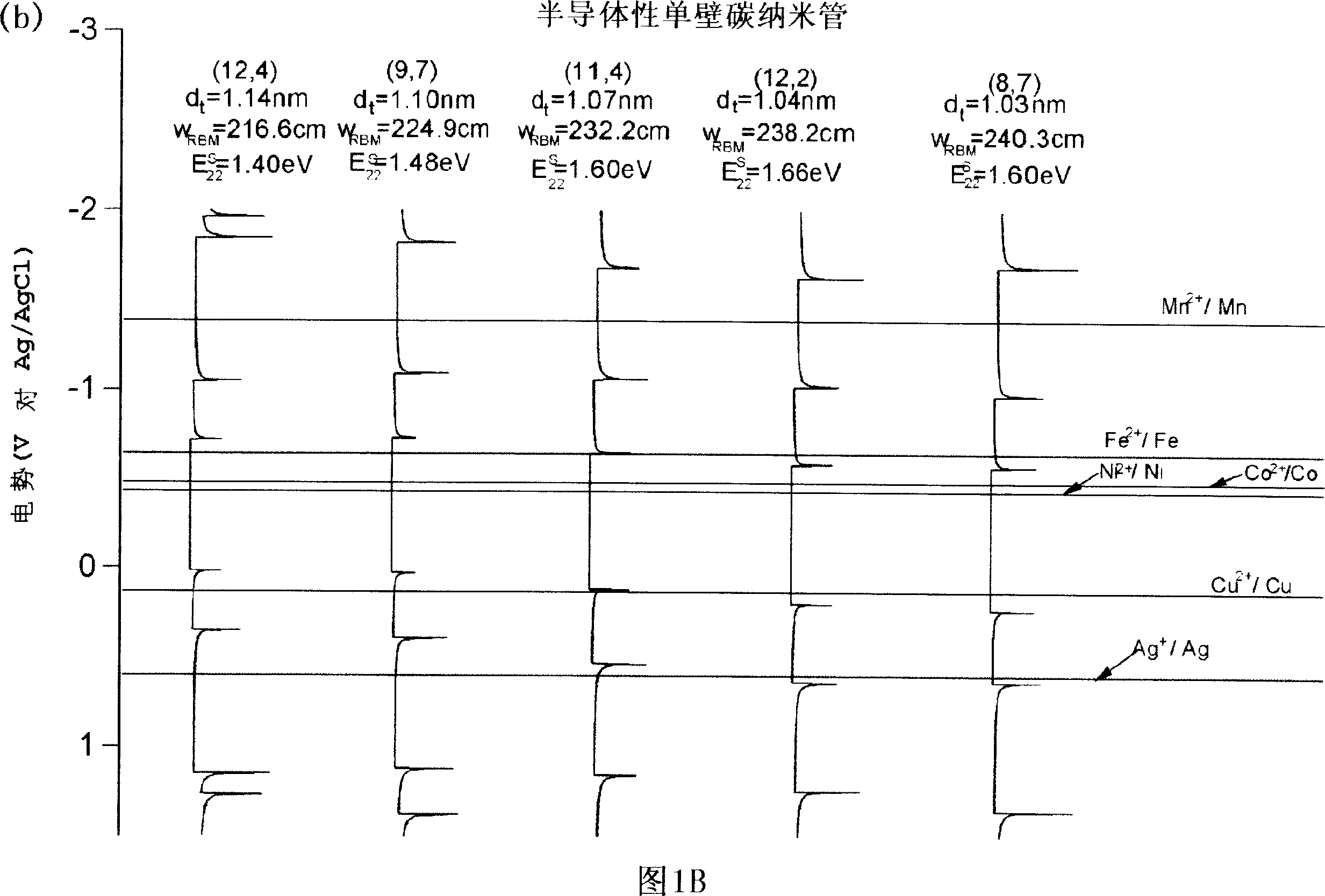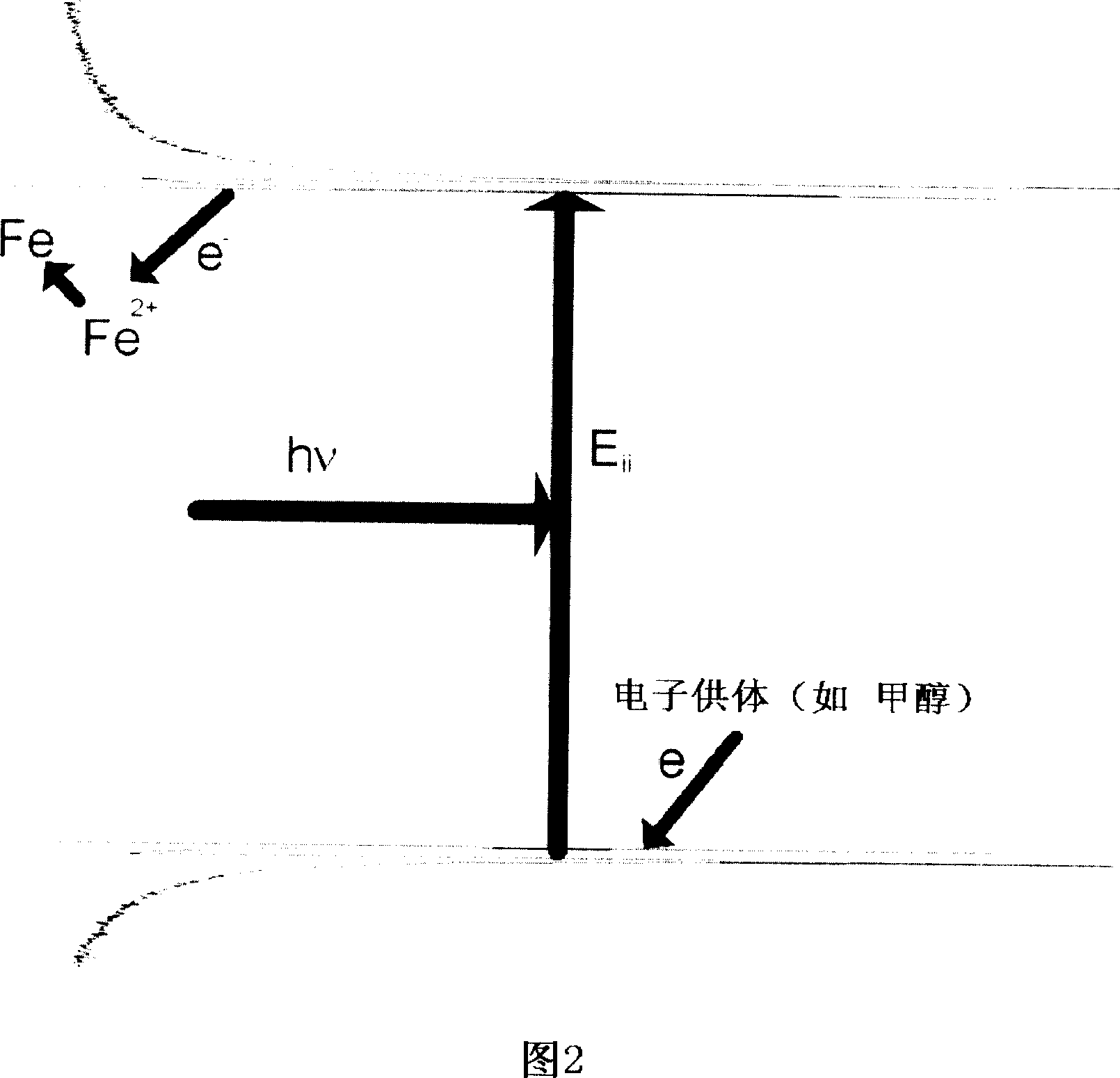Carbon nanotube structure-selective separation and surface fixation
A technology of carbon nanotubes and nanotubes, which is applied in the field of highly selective separation, concentration and refining of carbon nanotubes, and can solve the problem of poor separation accuracy
- Summary
- Abstract
- Description
- Claims
- Application Information
AI Technical Summary
Problems solved by technology
Method used
Image
Examples
Embodiment 1
[0201] 1.1 Depositing metal on carbon nanotubes
[0202] Carbon nanotubes (CarboLex AP-Grade SWNT (SWNT: purity 50-70%)) in 1% sodium dodecyl sulfate (SDS) aqueous solution were subjected to ultrasonic dispersion treatment for 15 minutes under the conditions of 24°C and 12000 rpm, and injected A filter (0.2 μm pore size filter) filters the supernatant and performs additional sonication and centrifugal separation under the same conditions to obtain a micellar dispersion.
[0203] Next, methanol (methanol: 99.8% purity, Infinity PureGrade; available from Wako Pure Chemical Industries, Ltd.) as an electron donor was added to the dispersion to a concentration of 0.1%. Add the following three different metal ion solutions to the solution obtained above to prepare three solutions with different metal ions.
[0204] I)0.1M Fe(NH 4 ) 2 (SO 4 ) 2 Aqueous solution
[0205] II) 0.1M CoCl 2 Aqueous solution
[0206] III) 0.1M MnCl 2 Aqueous solution
[0207] The three solutions prepared in th...
Embodiment 2
[0213] Fig. 8 is a diagram showing the structure of an apparatus according to an embodiment of the present invention. Different wavelengths of 1064nm (λ1), 785nm (λ2) and 514nm (λ3) are used as the illumination light source for photoelectrochemical metal deposition. The micelle dispersion liquid is obtained by dispersing and purifying the carbon nanotubes in a 1% sodium lauryl sulfate aqueous solution, which is used as a solution containing carbon nanotubes. Fix the thin film glass in the reaction vessel, and add Fe(NH 4 ) 2 (SO 4 ) 2 To the concentration of 0.1M, the substrate was irradiated with light of wavelength (λ1, λ2, or λ3) for 10 minutes. After the deposited metal carbon nanotubes are accumulated on the substrate, the carbon nanotubes are cleaned with sulfuric acid, and Raman spectroscopy is performed in the radial breathing mode to determine the chirality vector of the deposited carbon nanotubes. In the part where the λ1 wavelength is used for illumination, it is found ...
Embodiment 3
[0216] Fig. 9 shows a graph of an experiment conducted similarly to the above-mentioned Example 2 with an additional step of flowing a solution containing carbon nanotubes and continuously supplying a dispersion liquid of the contained carbon nanotubes. As a result, carbon nanotubes can be selectively deposited similarly to the above, resulting in an increase in deposition amount of two to ten times.
PUM
| Property | Measurement | Unit |
|---|---|---|
| diameter | aaaaa | aaaaa |
Abstract
Description
Claims
Application Information
 Login to View More
Login to View More - R&D
- Intellectual Property
- Life Sciences
- Materials
- Tech Scout
- Unparalleled Data Quality
- Higher Quality Content
- 60% Fewer Hallucinations
Browse by: Latest US Patents, China's latest patents, Technical Efficacy Thesaurus, Application Domain, Technology Topic, Popular Technical Reports.
© 2025 PatSnap. All rights reserved.Legal|Privacy policy|Modern Slavery Act Transparency Statement|Sitemap|About US| Contact US: help@patsnap.com



